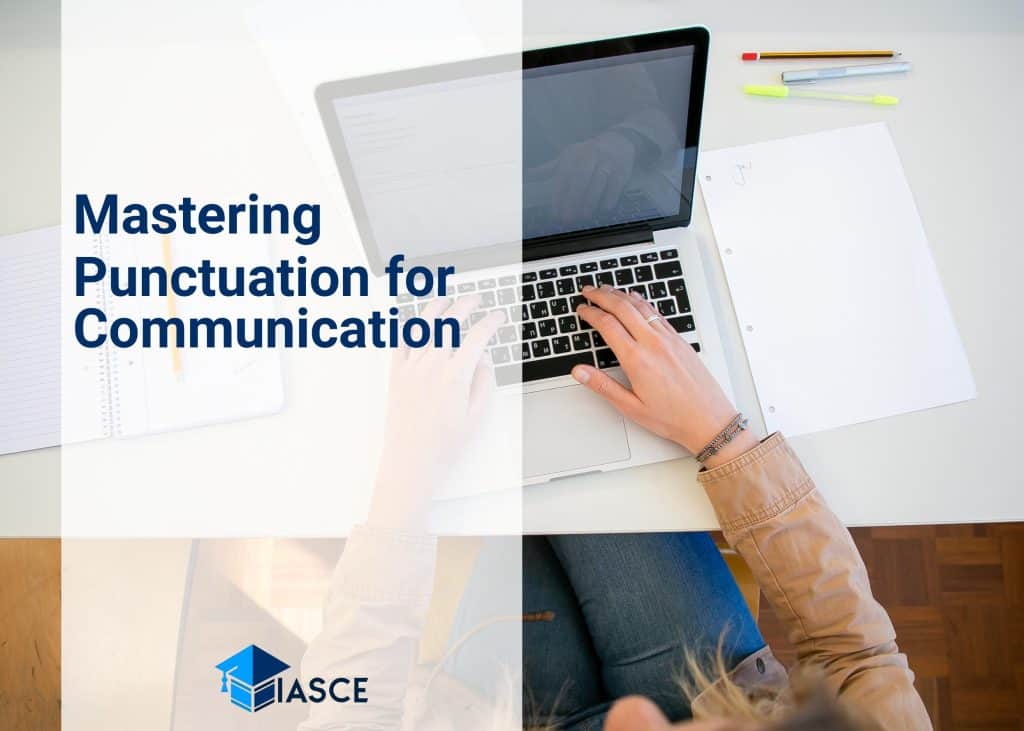Mastering proper punctuation can feel like a daunting task, but it’s an essential skill for clear and effective communication. Trust me, I’ve been there – staring at a sentence, wondering where the heck does this comma go? Or should it be a semicolon instead?
But fear not! By the end of this comprehensive guide, you’ll have a solid understanding of punctuation rules that’ll make your writing shine. Whether you’re drafting an email, crafting a compelling blog post, or penning the next great American novel, knowing how to use punctuation correctly will help your ideas come across clearly and effectively.
So let’s dive in. Are you ready to become a master of proper punctuation?
Understanding the Basics of Punctuation
Punctuation, it’s far more than just a series of dots, dashes, and squiggles. It serves as a roadmap for our language, guiding readers through the twists and turns of sentences. As an expert in English grammar, I’ll delve into this fascinating world and help you master its basics.
Let’s start with the period (.), one of the simplest punctuation marks. It signals the end of a sentence. Simple enough right? But don’t underestimate its power! This tiny dot helps to separate thoughts and ideas clearly on paper.
Next up are commas (,), known as quite the versatile performer in our punctuation toolkit. They’re used to separate items in a list or indicate brief pauses within sentences without fully stopping like periods do. However, it’s crucial not to overuse them as it can make your writing seem cluttered.
The exclamation point (!) is all about emotion—surprise, excitement or shock—it adds punch to your words but remember moderation is key here too!
Adding variety are quotation marks (“”). These come in pairs and they work together to highlight someone’s exact words or highlight special terms.
And how can we forget about question marks (?) which turn any statement into an inquiry immediately?
Here’s a quick rundown:
| Punctuation Mark | Function |
|---|---|
| Period (.) | Ends sentences |
| Comma (,) | Separates items/indicates pause |
| Exclamation Point (!) | Shows strong emotion |
| Quotation Marks (“”) | Indicates direct speech/special terms |
| Question Mark (?) | Used at end of questions |
Now onto something often overlooked—the humble semicolon (;). It links closely related sentences that could stand alone if needed be but have been bound together for clarity or emphasis.
Finally there’s colon (:), another multifaceted mark that introduces lists, elaborations on points mentioned earlier or even sets up quotations.
Just remember folks; punctuation isn’t there merely for decoration — these little symbols bear much weight when it comes to both written expression and comprehension!
Essential Grammar Rules: Mastering Punctuation
Let’s dive into the world of punctuation, a vital aspect of written communication. It’s like the traffic signals for language, guiding readers through your words.
First off, let’s talk about periods. These tiny dots may seem insignificant, but they’re crucial in English grammar. They signal the end of a full thought or idea and create necessary pauses in our sentences.
Consider commas as your best friend when dealing with long sentences. They help break down information to make it digestible and clear for readers, separating elements within a sentence that need distinction.
Exclamation points are like spices – you don’t want to overuse them! They’re used to express strong emotions or emphasis; however, too many can make your writing look unprofessional.
Question marks? Yes, these are used at the end of direct questions. But remember not every question needs one; rhetorical ones can do without.
Meanwhile, colons and semicolons serve their unique purposes too:
| Punctuation | Usage Example |
|---|---|
| Colon | Introducing a list: apples, oranges, bananas |
| Semicolon | Connecting related ideas; no conjunction needed |
Lastly is apostrophes—often confused with single quotes—are primarily used for contractions (it’s) and possession (John’s book).
Mastering punctuation isn’t just about knowing where these symbols go in a sentence but understanding why we use them. Correct usage enhances clarity and ensures your message doesn’t get lost in translation. A well-punctuated piece reflects not only careful attention to detail but also respect for readers’ comprehension.
Success lies in practice so keep honing those skills!
Conclusion: Putting It All Together in Proper Punctuation
Mastering proper punctuation, I’ve found, is like putting together pieces of a puzzle. Each mark has its place and serves its specific purpose to create an overall picture of clear and effective communication. In the realm of writing, punctuation are the traffic signals guiding your readers through your thoughts.
Let’s take a brief look at some key takeaways from our comprehensive guide on mastering proper punctuation:
- Periods act as full stops, signaling the end of complete thoughts.
- Commas provide pauses within sentences, allowing us to list items or separate clauses.
- Semicolons connect closely related ideas; they’re more potent than commas but less final than periods.
- Colons introduce lists, explanations or examples following a complete sentence.
- Question marks and exclamation points express inquiry and strong emotions respectively.
With these basics under our belt, we can construct sentences that not only make sense but also engage our readers with their rhythm and pacing. Consider this example:
“I love reading books: mysteries thrill me, romances warm my heart, biographies inspire me.”
Notice how the colon introduces the list while commas separate each item? That’s precision punctuation at work!
In conclusion (and without using “In conclusion,”), it’s essential to remember that practice makes perfect when it comes to mastering proper punctuation. Keep practicing your craft – write often and edit ruthlessly! With time and effort you’ll find yourself becoming more confident in punctuating your prose perfectly.
Remember that there’s always room for improvement when honing any skill – including punctuation mastery. So keep exploring new resources, asking questions, challenging yourself with complex sentence structures… because every mark matters!

